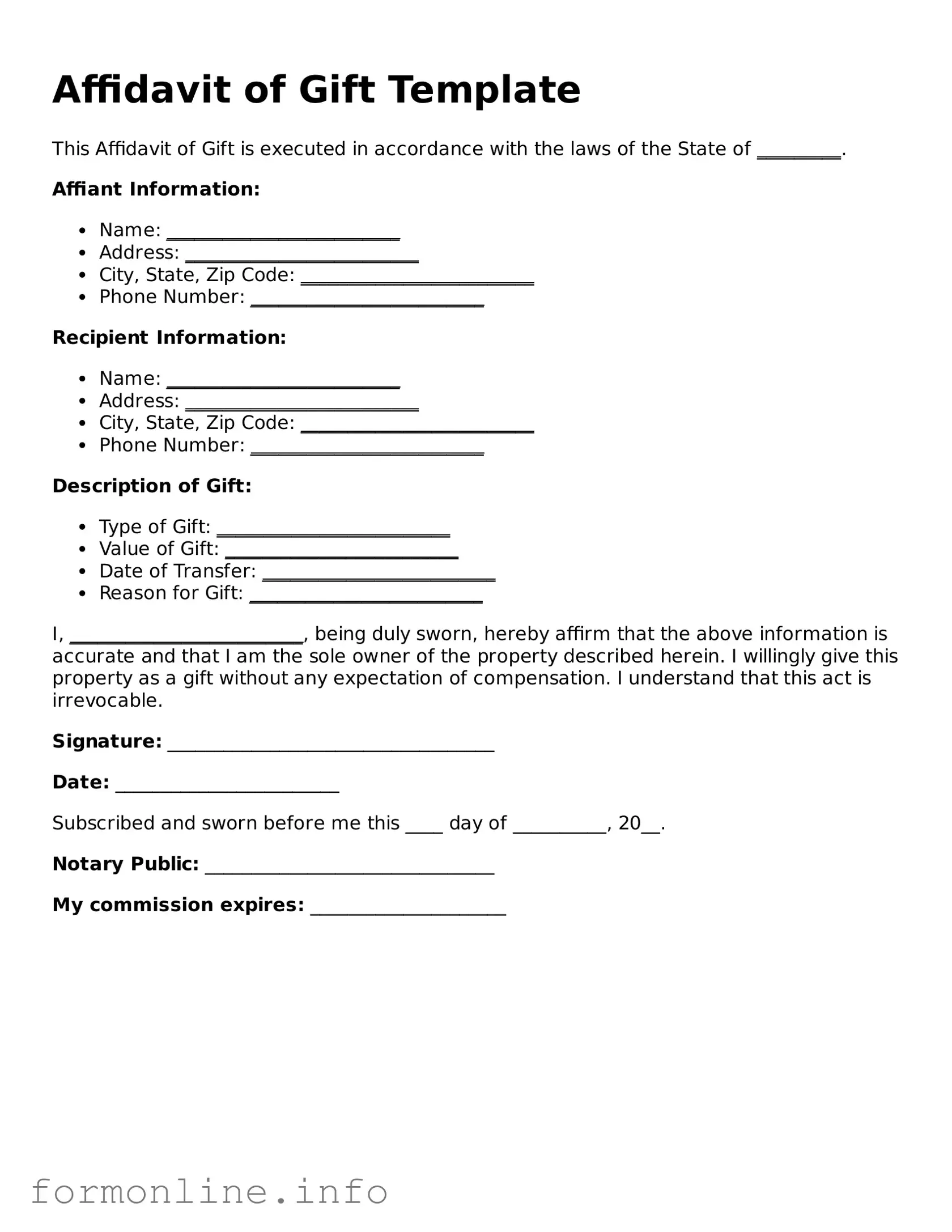Printable Affidavit of Gift Form
The Affidavit of Gift form is a legal document used to declare a gift of property or assets from one individual to another. This form serves as a formal acknowledgment that the transfer is a gift, not a sale or exchange, ensuring that both parties understand the nature of the transaction. Understanding the nuances of this form can help prevent potential disputes and clarify ownership, making it essential for anyone considering a significant gift.
Ready to fill out the Affidavit of Gift form? Click the button below to get started!
Prepare Form Online
